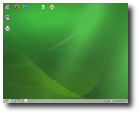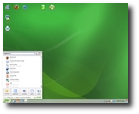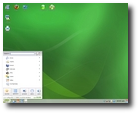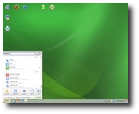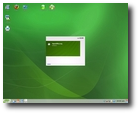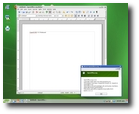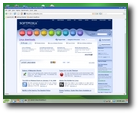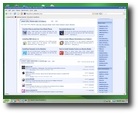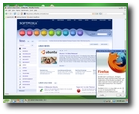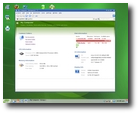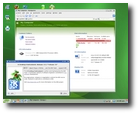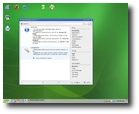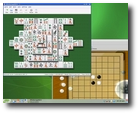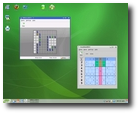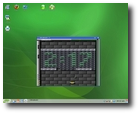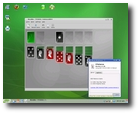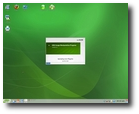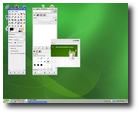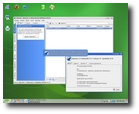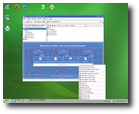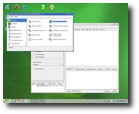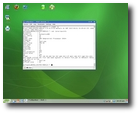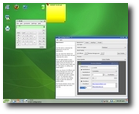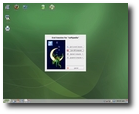The long awaited, award winning OpenSuSE 10.3 has been released today with everything a user needs to get started with Linux. It includes a flexible Linux-Windows dual-boot configuration, Microsoft Office file compatibility with the latest OpenOffice.org office productivity suite and enhanced multimedia support. What could an ex-Windows ? and future Linux ? user want more? Now openSUSE is based on Linux kernel 2.6.22, with a large variety of fresh open-source applications for desktops, servers and software development.
You can choose between the newest versions of Gnome and KDE desktop environments, openSUSE comes with both of them. AppArmor is the solution that protects your operating system and applications against threats like viruses, malware and attacks. If you are interested in virtualization, openSUSE comes with the latest virtualization software like Xen 3.1 and VirtualBox 1.5. The "1-Click Install" feature that gives users easy access to many more software packages residing on the openSUSE Build Service appears for the first time in openSUSE 10.3.
Without any further introduction, let?s have an in-depth look at the highlights to be found in this new release of openSUSE:
Adding Extra Software Repositories During Installation
After the distribution's setup, YaST will offer three additional repositories: "oss", "non-oss" and "debug". "Oss" contains the entire FTP distribution but with more packages than the ones included on the CDs. In "non-oss" you will find software that's under a proprietary or non-open source license. If you need debuginfo packages for debugging your programs, you will find them in the 3rd repository, in "debug".
Localization support on separate media CDs
The 1-CD installation media comes with language support for American English only. Other languages are available separately, in the "oss" repository.
YaST comes with Gtk and Qt Front-Ends
The new YaST gtk front-end runs on the GNOME desktop, and YaST Qt front-end on the others. Both front-ends are similar, with only one exception: the gtk software management module, which differs very much from the Qt port. If you want to start the Qt version on the GNOME desktop, you should:
- open the /etc/sysconfig/yast2 file as root - after this, change WANTED_GUI="auto" to WANTED_GUI="qt". Save and exit. - to start the gtk flavor of YaST, do as above but change WANTED_GUI="auto" to WANTED_GUI="gtk".
AppArmor 2.1
AppArmor's syntax now can distinguish folders from files and some minor syntax bugs were fixed.
Gaim was replaced by Pidgin
The Gaim multi-protocol instant messenger was replaced with Pidgin.
KDE and GNOME are installed in new locations
Gnome is installed from now under the /usr file system hierarchy and KDE 4 now follows. KDE 3 will remain in /opt for compatibility reasons.
libata powers now your IDE devices
Libata uses /dev/sda for the first harddisk, instead of /dev/hda. If you have a disk with more than 15 partitions, they will not be handled automatically at this moment. You can disable libata support by booting the kernel with the following parameter:
hwprobe=-modules.pata
After this, you will see all your 15+ partitions.
Encrypted partitions are easy to setup
The back-end technology of boot.crypto has been changed from cryptoloop to dm-crypt. Any old /etc/cryptotab will work with no modifications on openSUSE 10.3. Additionally, /etc/crypttab (notice the missing 'o' in the file name) is from now on supported, and LUKS volumes receive the same treatment. You can manually enable boot.crypto, which is no longer enabled by default, by using the following command:
chkconfig boot.crypto on
It is still possible to use cryptoloop via losetup and mount.
Enabling Quota support has never been easier
YaST allows you, from this moment on, to configure quota for user accounts from it. To enable quota support, you should activate the "Enable quota support" check box in the fstab options when partitioning in the first stage of the setup. In the second stage, the advanced options for user accounts provide the quota module where the rules can be set.
Improved Zeroconf service
This service is now provided by the Avahi stack instead of mDNSResponder. However, mDNSResponder and howl compatibility libraries continue to be available.
Support for older Intel graphics chips
Older Intel graphics chips are supported by two drivers, "i810" and "intel". The last one is the default in openSUSE 10.3 due to the high demand for features like native mode setting (no longer VESA BIOS based) and RANDR 1.2 support.
Improved support for Intel Wireless Link WiFi drivers
Two drivers are available in openSUSE 10.3, the traditional ipw3945 which is installed by default and the new iwlwifi driver as an alternative offer. If you want to remove the traditional one, you can do that in YaST ->"Software" -> "Software Management" and take it out. After this, iwlwifi will take its place.
More tools to help you burn your CDs and DVDs
The cdrecord package is no more a part of this distribution. It was replaced by the new wodim, genisoimage and icedax packages from the cdrkit project. They can be used to record data or audio CDs on a CD recorder that complies with the Orange Book standard. For writing DVDs you can use growisofs. The graphical front-ends handle this transparently.
Here at Softpedia, we tested the KDE CD of openSUSE 10.3. Our first impressions were:
- the distribution is really fast! - it comes with a lot of eye-candy, for your viewing pleasure - it includes the power of the Kickoff menu - each daily task can be covered by the range of applications contained by openSuSE - the installation is the same old wizard since SuSE 9.3, composed of two parts, the basic setup and after that the system configuration, where you can set up every piece of hardware from your machine. - applications such as GIMP and OpenOffice benefit from custom splash-screens created especially for this release. - the most important thing is that KDE 4 Beta 2 runs alongside KDE 3.5.7, so don't be alarmed when you see programs that are part of KDE 4.0.
All in all, if you used openSUSE before, you are going to love this new release, especially the KDE version.
You can download openSUSE 10.3 right now from Softpedia.

 14 DAY TRIAL //
14 DAY TRIAL // 